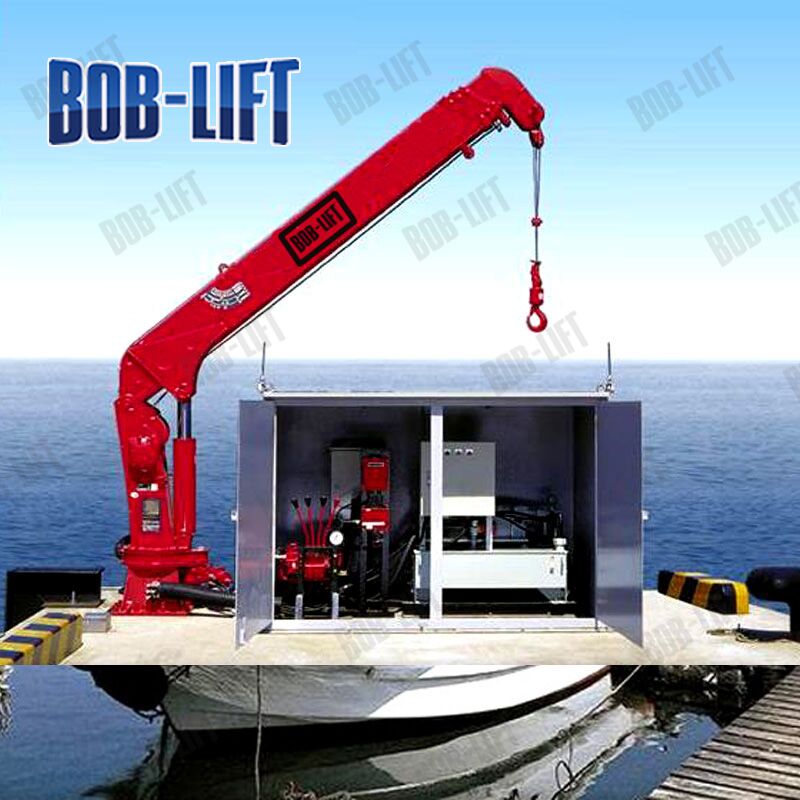The marine industry is extensive and continuously developing. As long as you visit any port city by boat, you will be shocked by the huge infrastructure displayed. All these infrastructures can efficiently and quickly transport almost all types of products and materials. As you go further, you will find offshore drilling sites, important military and defense outposts, and ships. In short, the marine sector has provided the impetus for a wide range of applications and maintained the smooth operation of modern industries.

Although various materials handling equipment are used in the shipbuilding industry, cranes are particularly important. Marine cranes can be different in design and function to meet specific application requirements while ensuring the best performance and safety.
Common applications of marine cranes.
Marine cranes are used to facilitate lifting and moving tons of materials and cargo from one location to another. The crane is the key machine in all kinds of offshore operations, whether it is handling ship-to-shore operations or building oil platforms at sea. Common applications of marine cranes include:
Submerged or recovered marine equipment; subsea transportation equipment.
Move equipment and materials around the deck.
Transfer equipment and materials to or from other platforms and ships.
The engineering expertise required to build these behemoths—some are several stories high—while ensuring safe and efficient operation—is extraordinary.
But what options are available, and how can users ensure that they use the correct type of crane to apply the specific vessel at hand?
Types of ship cranes.
Gantry marine crane.
Gantry cranes are used to move the edge of the dock and disembark the cargo. These cranes are several stories high and are the largest cranes in loading and unloading shipping applications. The unique feature of these cranes is that the operator’s cab is located on top of the crane, suspended from the car. The cabin is 80% transparent, providing operators with a clear view of loading and unloading. This method is compared with the design of the traditional model, where the crane operator stays at the bottom of the equipment.
Overhead cranes also use spreaders instead of hooks. The spreader moves in four directions is locked on the corner casting of the container ship and lift the cargo from there.
Today, precision bridge cranes can lift up to four cargo containers at a time, speeding up the unloading process. However, the price of improving the lifting capacity is to load cargo onto the ship more carefully, because the weight of the cargo and its increase to the deck or cargo hold can cause dangerous movement or tilting of the ship.
Overhead jib crane.
At the same time, the jib crane uses horizontal components-cantilever or jib to support the mobile crane. These components are permanently fixed on a stable surface, such as a wall or a pillar. In the marine industry, jib cranes are often used for the offshore drilling industry. In addition to marine applications, jib cranes are often used on construction sites on top of buildings to lift materials to different floors in the structure. In order to meet specific application requirements and clearance requirements, various types of jib cranes can be provided.
In addition to these common crane types, monorail and pedestal cranes, gantry cranes, and hook devices are also often used in marine environments.
The key factors that should be considered when choosing a marine crane.
Since the shipbuilding industry is inherently unpredictable, it is very important to carefully consider all variables before choosing a specific type of crane. For example, the behavior of the ocean itself can have a great impact on the crane’s function and material handling capabilities. When constructing offshore drilling platforms, ocean conditions are particularly important, because there are many unstable factors that need to be dealt with, such as weather and bottom suction, which lead to extremely unstable environments.
When dealing with terminal operations, it is important to consider the impact of each piece of cargo on the ship’s listing behavior. Operating these cranes safely and effectively requires great care and experience, and attention to the waters.
In order to ensure the stable and safe operation of the shipbuilding industry, it is very important to cooperate with crane suppliers who understand the unique needs of the industry. They will work with you to choose the model that best suits your specific needs. Whether working in the shipping department or the offshore department, take the time to weigh your options and carefully consider all the requirements of the application.
 truck crane,Truck mounted crane,Marine Crane –
truck crane,Truck mounted crane,Marine Crane –